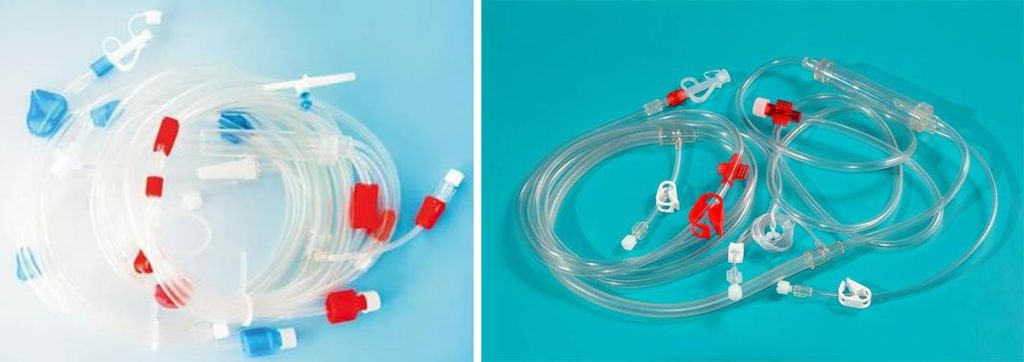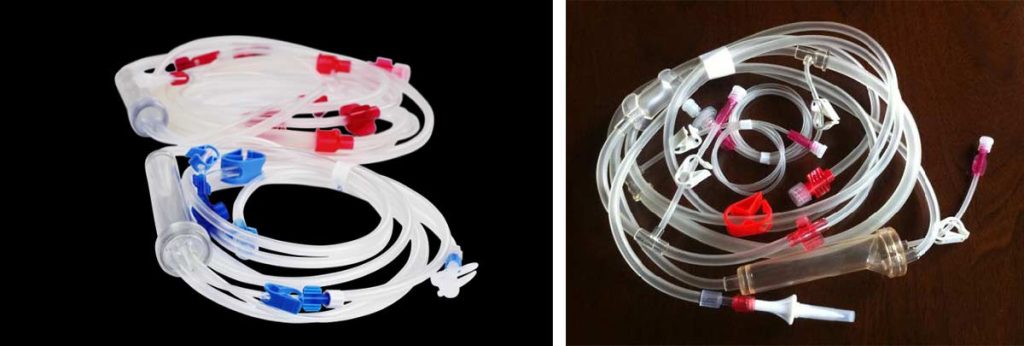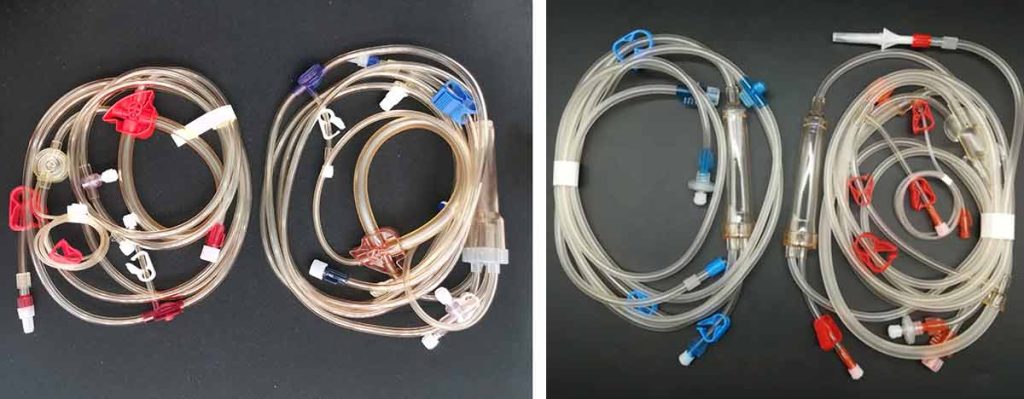

Preventing peritoneal dialysis catheter infection is essential for maintaining the health and well-being of patients undergoing this life-saving treatment. Infections, particularly peritonitis, pose significant risks. Studies show that patients on continuous ambulatory peritoneal dialysis (CAPD) and automated peritoneal dialysis (APD) face higher infection rates compared to those on home hemodialysis. Among 407 severe infection episodes, 88% required hospitalization, with a median stay of 6–8 days. These infections can lead to prolonged hospital stays, catheter removal, or even intensive care in severe cases.
This blog provides practical tips to help patients reduce the risk of infection and improve their quality of life.
Key Takeaways
- Wash your hands well before and after touching the catheter. This helps lower the chance of infections.
- Keep the catheter area clean and dry every day. Use clean gauze and keep it dry to stop bacteria.
- Watch for signs of infection like redness or cloudy fluid. Acting fast can stop bigger problems.
- Listen to your doctor and go to regular check-ups. These visits can find problems early.
- Use germ-killing solutions around the catheter area. This removes bacteria and reduces infection risks.
Understanding Peritoneal Dialysis and Catheter Infection
What Is Peritoneal Dialysis?
Peritoneal dialysis is a treatment for kidney failure that uses the lining of the abdomen, called the peritoneum, to filter waste and excess fluids from the blood. This process involves filling the abdominal cavity with a special solution, known as dialysate, through a catheter. The dialysate absorbs waste products, which are then drained out of the body. Unlike hemodialysis, which requires a machine to clean the blood, peritoneal dialysis can be performed at home, offering greater flexibility for patients.
The Role of the Catheter in Peritoneal Dialysis
The catheter is a small, flexible tube inserted into the abdomen to deliver and remove the dialysate during peritoneal dialysis. It serves as the primary access point for the treatment. Proper placement and care of the catheter are essential to ensure effective dialysis and prevent complications. Since the catheter remains in place for extended periods, it requires meticulous hygiene and maintenance to reduce the risk of infection. Patients must follow strict protocols to keep the catheter exit site clean and dry.
Common Causes of Peritoneal Dialysis Catheter Infection
Infection related to peritoneal dialysis catheters often occurs at the exit site or within the tunnel where the catheter is placed. The infection can lead to peritonitis, a serious condition that affects the lining of the abdomen. Studies have shown that patients undergoing continuous ambulatory peritoneal dialysis (CAPD) and automated peritoneal dialysis (APD) face higher risks of severe infections compared to those on home hemodialysis. Statistical analyses, such as Cox regression, reveal hazard ratios of 2.8 for CAPD and 2.2 for APD, highlighting the increased vulnerability of these patients. Common causes include poor hygiene practices, contamination during dialysis exchanges, and improper catheter care. Recognizing these risk factors is crucial for preventing peritoneal dialysis catheter infection.
Recognizing Symptoms of Peritoneal Dialysis Catheter Infection
Early Warning Signs
Identifying the early signs of a peritoneal dialysis catheter infection is crucial for timely intervention. Dialysis patients should monitor their catheter site and overall health for any abnormalities. Common symptoms include redness, swelling, or tenderness around the catheter exit site. The presence of pus or drainage may also indicate an infection. In some cases, patients may experience abdominal pain, nausea, or diarrhea, which could signal peritonitis. Additionally, cloudy dialysate after drainage or a fever may point to an underlying issue.
The table below summarizes these early warning signs:
| Early Warning Signs of Infection | Description |
|---|---|
| Redness and inflammation | Area around the catheter may appear red and swollen. |
| Pus or drainage | Presence of pus or drainage from the catheter site. |
| Tenderness or pain | Sensation of pain or tenderness around the catheter. |
| Abdominal pain | Pain in the abdominal area may indicate peritonitis. |
| Cloudy dialysate | Dialysate that appears cloudy after being drained. |
| Fever | Elevated body temperature may signal infection. |
| Nausea | Feeling of nausea can be a symptom of infection. |
| Diarrhea | Diarrhea may also occur in cases of peritonitis. |
Patients undergoing peritoneal dialysis should remain vigilant for these symptoms and act promptly to prevent complications.
When to Seek Medical Attention
Immediate medical attention is necessary when symptoms of infection worsen or persist. For example, if redness or swelling spreads, or if the catheter site produces significant pus, a healthcare provider should be contacted. Persistent abdominal pain or cloudy dialysate are strong indicators of peritonitis, which requires urgent care. Fever, nausea, or diarrhea that does not subside may also warrant a visit to the doctor. Regular check-ups with healthcare professionals can help detect and address issues early, reducing the risk of severe outcomes.
Potential Complications of Untreated Infections

Untreated peritoneal dialysis catheter infections can lead to serious complications. Tunnel infections may progress to peritonitis, a severe condition that affects the abdominal lining. Peritonitis often results in treatment failure and may require surgical intervention. Patients with untreated infections face a higher likelihood of hospitalization, which increases morbidity.
The table below outlines potential complications:
| Complication Type | Risk Increase | Outcome |
|---|---|---|
| Peritonitis | 2x | Treatment failure |
| Access revision | 2x | Need for surgical intervention |
| Hospitalization | 3x | Increased morbidity due to complications |
- Tunnel infections can escalate into peritonitis if left untreated.
- Peritonitis often demands immediate medical care and, in severe cases, surgery.
Recognizing symptoms early and seeking timely medical help can prevent these complications and improve patient outcomes.
Essential Hygiene Practices for Infection Prevention
Proper Handwashing Techniques
Handwashing is one of the most effective ways to prevent infections, including peritoneal dialysis catheter infection. Proper technique ensures the removal of harmful bacteria and reduces the risk of contamination. Research highlights that performing hand hygiene before and after handling catheters can significantly lower infection rates. Gloves should also be used alongside handwashing to enhance protection.
To wash hands effectively, follow these steps:
- Wet hands with clean, running water.
- Apply soap and lather thoroughly, covering all surfaces, including between fingers and under nails.
- Scrub hands for at least 20 seconds.
- Rinse well under running water.
- Dry hands using a clean towel or air dry them.
A study by Knight et al. demonstrated a decrease in infection rates from 4.96 to 3.98 per 10,000 patient-days when proper handwashing protocols were followed (P=0.0036). This evidence underscores the importance of consistent hand hygiene in infection prevention.
Using Antiseptic Solutions Effectively
Antiseptic solutions play a critical role in maintaining cleanliness around the catheter exit site. These solutions help eliminate bacteria and reduce the likelihood of infection. Alcohol-based hand sanitizers (ABHS) are particularly effective when soap and water are unavailable. Clinical studies reveal that ABHS usage correlates with improved hand hygiene compliance, rising from 38% to 63%, without increasing Clostridioides difficile infection (CDI) rates.
When using antiseptic solutions:
- Apply the solution generously to the hands or the catheter site.
- Allow it to dry completely before proceeding with any catheter-related tasks.
- Avoid touching the catheter or exit site until the antiseptic has fully dried.
The effectiveness of ABHS in reducing infections, such as MRSA and VRE, has been well-documented, with decreases of 21% and 41%, respectively, in observational studies.
Daily Cleaning of the Catheter Exit Site
Daily cleaning of the catheter exit site is essential to prevent peritoneal dialysis catheter infection. This practice minimizes the buildup of bacteria and keeps the area sterile. Recommendations for cleaning include using sterile gauze to cover the exit site and cleaning surrounding surfaces, such as sink faucets, with bleach weekly. Patients should also wash their hands with hot, soapy water multiple times a day.
While showering daily is encouraged, it is crucial to keep the catheter and exit site dry. Using waterproof dressings can help protect the area during bathing. Following these protocols can significantly reduce infection risks and improve patient outcomes.
| Cleaning Protocols | Recommendations |
|---|---|
| Covering the exit site | Use sterile gauze to prevent contamination |
| Cleaning surfaces | Clean sink faucets and shower heads with bleach |
| Hand hygiene | Wash hands with hot, soapy water frequently |
| Daily showering | Keep the catheter and site dry |
By adhering to these hygiene practices, patients can effectively lower the risk of infections and maintain the integrity of their dialysis treatment.
Best Practices for Catheter Care and Maintenance
How to Change Dressings Safely?
Changing dressings on a catheter site requires precision and adherence to proper techniques to prevent infections. The process begins with assessing the catheter site for signs of redness, swelling, or tenderness. Clean gloves should be worn during this step. After the assessment, the current dressing should be gently removed without disturbing the catheter. This minimizes the risk of dislodging the device.
Once the old dressing is removed, sterile gloves should replace the clean ones. Skin antisepsis is a critical step. Alcohol-based chlorhexidine should be applied to the area for at least 30 seconds to eliminate bacteria. After the skin is dry, a securement device can be applied to stabilize the catheter. Finally, a transparent semipermeable (TSM) dressing should be placed over the site, ensuring it is smooth and free of tension. Labeling the dressing with the date and initials helps maintain accurate records.
Keeping the Exit Site Clean and Dry
Maintaining a clean and dry exit site is essential for reducing the risk of peritoneal dialysis catheter infection. Daily cleaning with soap and water is recommended. Dialysis patients should avoid using alcohol or other irritants, as these can damage the skin and increase susceptibility to infection. After cleaning, the area should be patted dry with a clean towel.
Waterproof dressings are useful during activities like showering. These dressings protect the catheter site from moisture, which can promote bacterial growth. Additionally, patients should inspect the site daily for any signs of redness, swelling, or discharge. Prompt action can prevent minor issues from escalating into serious complications.
Avoiding Injury or Irritation to the Exit Site
Protecting the catheter exit site from injury or irritation is vital for long-term catheter care. Dialysis patients should ensure that the catheter tubing remains untangled and free from kinks. Tugging or pulling on the catheter should be avoided, as this can cause trauma to the site. Loose clothing can help prevent unnecessary pressure or friction on the area.
Regularly checking the catheter system for obstructions or leaks is another important practice. Using a closed system for urine collection bags or leg bags minimizes the risk of contamination. If any changes in the catheter or the patient’s condition occur, they should be documented and reported to a healthcare provider immediately.
| DO’s of Catheter Care | DON’Ts of Catheter Care |
|---|---|
| Clean the exit site daily with soap and water | Avoid using alcohol or irritants on the site |
| Keep the catheter tubing untangled | Do not pull or tug on the catheter |
| Use waterproof dressings during showers | Avoid leaving the catheter exposed to moisture |
By following these best practices, patients can significantly reduce the risk of complications and maintain the effectiveness of their treatment. These steps are especially important for those undergoing peritoneal dialysis or hemodialysis, as both procedures rely on proper catheter care to prevent infections.
The Role of Healthcare Professionals in Preventing Infection
Importance of Regular Check-Ups
Healthcare professionals play a vital role in preventing peritoneal dialysis catheter infection by conducting regular check-ups. These appointments allow medical teams to monitor the catheter exit site for signs of redness, swelling, or discharge. Early detection of potential issues can prevent infections from escalating into severe complications. During these visits, healthcare providers may also assess the patient’s overall health and ensure that the catheter remains functional and free from obstructions.
Routine check-ups provide an opportunity for patients to receive personalized advice on catheter care. Medical teams often recommend protective measures, such as wearing gloves and masks when handling the catheter. They may also prescribe antibiotic ointments to reduce the risk of bacterial growth around the exit site. By adhering to these recommendations, patients can significantly lower their risk of infection.
When to Contact Your Healthcare Provider?
Dialysis patients should contact their healthcare provider immediately if they notice any unusual symptoms. Redness, tenderness, or pus around the catheter exit site may indicate an infection. Cloudy dialysate, abdominal pain, or fever are warning signs of peritonitis, a serious condition requiring urgent medical attention. Regularly checking the catheter site and reporting any changes can help prevent complications.
Healthcare providers also offer guidance on managing minor issues before they worsen. For example, they may suggest adjustments to daily hygiene routines or recommend specific cleaning solutions. Prompt communication with medical professionals ensures that patients receive timely interventions, reducing the likelihood of hospitalization or catheter removal.
Following Medical Advice and Training

Following medical advice and training is essential for maintaining catheter health. Training programs emphasize the importance of proper hygiene and catheter care. These programs educate patients, caregivers, and healthcare staff on evidence-based practices, such as handwashing techniques and the safe handling of catheters. Clinical research shows that 50 to 70 percent of catheter-associated infections, including those in hemodialysis and peritoneal dialysis, are preventable through proper maintenance.
Patients who follow their healthcare provider’s instructions benefit from reduced infection rates and improved treatment outcomes. For instance, daily cleaning of the catheter exit site and the use of antiseptic solutions can minimize bacterial contamination. Adhering to these practices ensures the effectiveness of peritoneal dialysis and enhances the patient’s quality of life.
Conclusion
Preventing peritoneal dialysis catheter infection requires a combination of consistent hygiene practices, proper catheter care, and regular medical consultations. Patients should prioritize daily cleaning of the catheter exit site, effective handwashing, and the use of antiseptic solutions. These steps significantly reduce infection risks and improve treatment outcomes.
Long-term benefits of proactive care are well-documented. Research shows that 50 to 70 percent of catheter-associated infections are preventable through proper hygiene and maintenance. However, infection control deficiencies remain a concern in healthcare settings, emphasizing the need for vigilance.
| Evidence Type | Description |
|---|---|
| CAUTI Prevention | 50 to 70 percent of catheter-associated infections are preventable. |
| Infection Control Deficiencies | Infection control failures were the most common deficiencies in 2014 surveys. |
Patients undergoing peritoneal dialysis or hemodialysis should consult healthcare professionals regularly. Medical teams provide personalized advice, monitor catheter health, and address potential issues early. Programs focusing on reducing unnecessary catheter use have also demonstrated sustained reductions in infection rates over time.
By following these strategies, dialysis patients can protect their health and enhance their quality of life.
